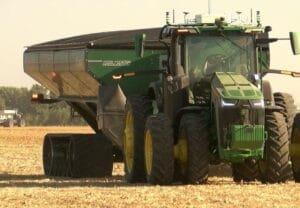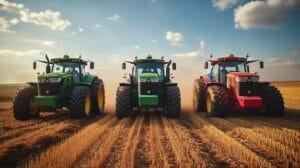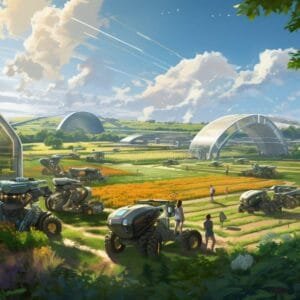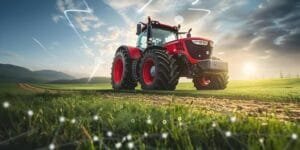The agricultural landscape is undergoing a profound change as smart technology revolutionizes traditional farming practices. From autonomous tractors to AI-powered crop monitoring systems, modern farms are increasingly becoming digital operations centers. This shift represents more than just mechanization; it marks the emergence of precision agriculture, where data-driven decisions and automated processes are optimizing crop yields while conserving resources. As global food demand rises and environmental pressures mount, these technological innovations are reshaping how farmers approach cultivation, harvest, and resource management. Modern farming is undergoing a revolutionary transformation through the integration of cutting-edge technologies. Precision agriculture systems now enable farmers to monitor crop health, soil conditions, and weather patterns with unprecedented accuracy. These refined tools utilize satellite imagery, drone surveillance, and IoT sensors to provide real-time data, allowing for optimized resource allocation and improved yields.
Automated machinery equipped with GPS guidance systems has become increasingly prevalent in fields worldwide. These smart tractors and harvesters operate with minimal human intervention, following pre-programmed routes while maintaining precise spacing and depth control. This automation reduces labor costs and minimizes waste by ensuring consistent application of seeds, fertilizers, and pesticides.
Vertical farming facilities represent another technological leap forward, incorporating LED lighting systems and hydroponics to grow crops in controlled environments. These indoor operations can produce fresh vegetables year-round, regardless of external weather conditions, while using significantly less water than traditional farming methods.Artificial intelligence and machine learning algorithms analyze vast amounts of agricultural data to predict crop diseases, optimize irrigation schedules, and forecast harvest times. These systems can detect early signs of pest infestation or nutrient deficiencies, enabling farmers to take preventive action before problems escalate.
Robot workers are becoming more common in agricultural settings, performing tasks such as fruit picking, weeding, and crop monitoring. These machines use advanced computer vision and soft-touch grippers to handle delicate produce without causing damage. Some models can work continuously, increasing operational efficiency and addressing labor shortages in the agricultural sector.
Blockchain technology is being implemented to enhance supply chain clarity and food traceability. Consumers can now track their produce from farm to table, ensuring food safety and authenticity while providing farmers with better market insights and fair pricing opportunities.
Smart irrigation systems utilize soil moisture sensors and weather forecasting data to deliver precise amounts of water to different zones within a field. These systems significantly reduce water consumption while maintaining optimal growing conditions for crops.
Gene editing techniques and biotechnology innovations are creating more resilient crop varieties that can withstand extreme weather conditions and resist common diseases. This scientific advancement helps ensure food security while reducing the need for chemical pesticides.
Digital marketplaces and mobile apps connect farmers directly with buyers, eliminating intermediaries and improving profit margins. These platforms also provide access to agricultural expertise, weather updates, and market prices, empowering farmers to make informed decisions.
The integration of 5G networks in rural areas is accelerating the adoption of smart farming technologies. High-speed connectivity enables real-time data transmission from field sensors and supports the operation of autonomous vehicles and drones, creating truly connected farms that operate with greater efficiency and productivity.










